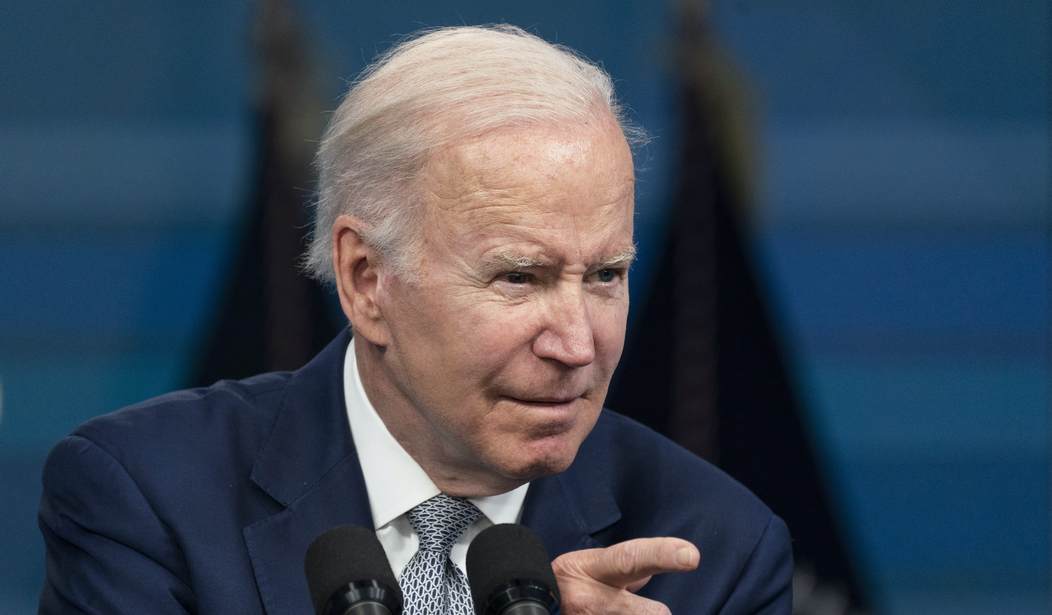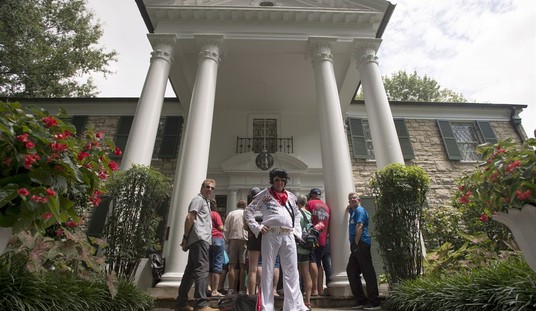If so, we can thank the cheap money that usually create asset bubbles — and point again to a Federal Reserve dissenter as a prophet. Fortune warned this morning that housing prices in as many as 40 markets could sharply drop over the next year as stagflation necessarily turns into recession. It won’t create as much damage as the housing-bubble pop did in the 2008 financial crisis, but it will leave the most recent home purchasers without a seat when the music stops:
Last week, Moody’s Analytics gave Fortune exclusive access to its updated proprietary analysis of U.S. housing markets. The firm aimed to find out whether fundamentals, including local income levels, could support local home prices. The finding? Through the first quarter of 2022, national house prices are “overvalued” by 24.7%. That’s up from the fourth quarter of last year, when Moody’s Analytics determined national house prices were “overvalued” by 20.9%.
Let’s be clear: That doesn’t mean Moody’s Analytics thinks U.S. home prices are about to drop by 24%. Instead, what it means is that home prices are, historically speaking, priced very high relative to household incomes. Now that we’ve reached this level, Zandi says, it will make it harder for home price growth to push upwards. Indeed, Zandi is predicting the year-over-year rate of home price growth will flatline to 0% by this time next year.
But not every regional housing market will be so lucky. While Zandi doesn’t predict national home price declines, he estimates significantly “overvalued” housing markets, places like Boise and Charlotte, could see 5% to 10% home price declines over the next 12 months. If a recession actually materializes—something Moody’s Analytics gives a 1-in-2 chance of occurring over the next 24 months—then Zandi says national home prices could fall by around 5%. Meanwhile, if a recession hits, Zandi says, those significantly “overvalued” housing markets would likely see home prices slashed by 15% to 20%.
Among the 413 regional housing markets measured by Moody’s Analytics, the firm deems 96% are “overvalued.” Simply put: Nearly the entire country has house prices that are higher than underlying fundamentals would historically support.
This might not matter in terms of bubble-popping if flipping and speculative purchases haven’t comprised a good portion of this bubble. If these prices have gone up on the power of actual homesteading, then a drift downward in valuation shouldn’t have too much of an impact on financial institutions. Homeowners can still pay their mortgages, at least as long as they maintain their current income levels in a recession. An “overvalued” market isn’t a catastrophe in itself, except for those who want to sell their home and have lost their positive equity in it.
However, the continuing rapid inflation pace will force the Federal Reserve to step up its monetary tightening by raising its interest rate. They’re already planning a series of 0.5-point increases this year, and last Friday’s 8.6%/1.0% consumer price index (CPI) result will likely spur even more intervention. If tomorrow’s producer price index (PPI) remains in double digits, you can probably bank on an even more aggressive approach to the Fed’s interest rate and money tightening. That will tighten the leash on business investment, and that will have an enormous impact on a jobs market that’s already looking a little shaky, according to Goldman Sachs:
Add that 14th job to your LinkedIn profile while the getting is good, as the U.S. labor market is poised to markedly slow down later this year, warns Goldman Sachs.
“Softer company-level hiring expectations and slower GDP growth in the second half of the year point to slower payroll growth in coming months,” said Goldman Sachs chief economist Jan Hatzius in a new note on Friday. “Recent anecdotes of hiring freezes and more selective hiring indicate that companies expect payroll growth to slow, and the most recent business activity surveys corroborate these signals.”
Hatzius forecasts employment growth of 215,000 jobs per month for the next three months. That is that poised to cool to 160,000 jobs added a month for the ensuing six months.
This slowdown would see the economy’s pace of growth job fall more than 50% from current levels; through May, nonfarm payroll growth over the prior three months has averaged 408,000.
The White House loooves to talk about its “record jobs growth,” but it’s not growth — it’s a jobs recovery, and it’s still not complete. We are still about 900,000 short of the jobs we had in February 2020 before the pandemic forced the loss of over 22 million jobs. More than half of those were recovered before Joe Biden took office, and at the current pace, it will take another year to make up not just for the loss of the February 2020 jobs level but also for the jobs that would have been created and filled in the two-plus years since due to population growth.
If that jobs loss falls off because business investment dries up, then some of those who bought at the tail end of the bubble might truly find themselves squeezed. If their homes are overvalued to the extent Zandi projects, they may not be able to easily downsize and adjust, either. And if the recession ends up damaging the jobs market to the extent that unemployment sharply rises, some of that damage might seep into the financials of lending institutions — although, thankfully, not to the extent we saw in 2008. That jobs bubble of 11 million unfilled jobs could evaporate very quickly, and with it any wage pressure that favors workers at the precise time that rapid inflation has undermined their buying power.
That appears to be one of the concerns in the stock market, too. At one point today, literally every stock on the S&P index was in negative territory, while the Dow Jones was down hundreds of points all day long and Bitcoin fell 17%. The Fed is likely to initiate a recession with its interventions, because it’s very unlikely that we will see a “soft landing” with incremental monetary adjustments. Ben Bernanke, the architect of the post-Great Recession monetary expansions that helped create this mess, says he’s still fairly certain that the Fed can pull off a “soft-ish” landing, but Bernanke turned out to be terribly wrong in 2009-10 and Thomas Hoenig turned out to be right. I know which way I’m betting this time around, too.
Update: A fair criticism from Chris Hayes, mainly because I didn’t explain what I meant:
the idea of a jobs market "bubble" is more than a bit nonsensical
— Chris Hayes (@chrislhayes) June 13, 2022
We’ve had two consistent and parallel issues in the post-pandemic recovery — a glut of unfilled jobs and a significant part of the potential workforce that’s churning or staying entirely out of it. The “Great Resignation” dynamic as well as the wage pressure on employers rely on that glut of unfilled jobs, which is a type of bubble itself. Once we start sliding into recession, that bubble will pop as those jobs simply evaporate without ever being filled, and those on the sideline waiting for their optimal entry point back into the workforce may well be left out for a very long time. That’s the jobs bubble I posited, although to Chris’ point it would have been better if I’d explained that up front.







Join the conversation as a VIP Member